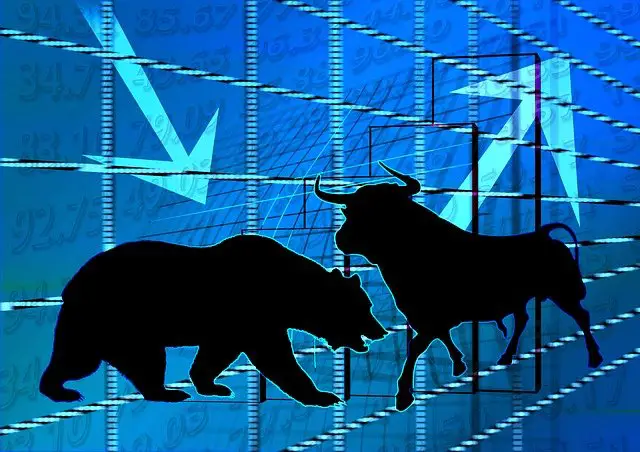Bullish markets and bearish markets are very different in the sentiment and price dynamics. Money made in bull markets can be given back in bear markets so a bullish bias can be dangerous when a real long term bear market arrives. People tend to think of the stock market as a whole as bullish or bearish but each chart can be in its own individual bear market at times.
Here are the ten best signs that a chart is bullish:
- Price is above both the 50-day and 200-simple moving averages.
- Price is within 10% of all-time highs.
- The dips in price bounce off key short term moving averages and the 50-day moving average acts as support.
- Traders and investors are surprised that the chart is rallying regardless of economic worries or earnings concerns.
- Bad news hits the chart but it eventually goes right back up to where it was before the news broke, because it was already priced in.
- Money continues to push the chart higher even when it has an overbought reading.
- The chart breaks out of a price range to a new high above previous resistance.
- Traders find huge amounts of set ups to choose from for momentum entries in the market not just this one chart.
- Fear of missing out on the rally replaces the fear of losing money on sudden drops.
- The majority of investors and traders do not believe the rally is real and that the chart will plunge at any moment.
While the generally accepted definition of a bear market is a 20% decline over a two month period in the stock market indices, the bullet points below are referring to just a chart being bearish. Believing the market will go down is being bearish in sentiment as a chart that starts showing warning signs of a drop is a bearish signal to lock in profits. Taking signals to exit an uptrend before being down 20% is a trading strategy. Being bearish early is a defense for keeping your bull market profits during corrections and bear markets and can improve your trading performance by decreasing your drawdowns.
Here are ten signs a chart is bearish:
- The chart begins to gap up in price in the morning at the open but ends up closing lower each day for multiple days.
- The chart was a market leader but is now struggling to hold its 50-day moving average on pullbacks and starting to close below it.
- The market indices trading below their 200-day simple moving averages and the 200-day SMA is beginning to slope downward is a warning to all other stock charts of a pending bear market.
- There is a lot of uncertainty about the future earnings of the stock you are trading.
- Clearly defined resistance levels in price develop on the chart but support levels are irregular.
- The chart is making lower highs and lower lows over multiple days.
- There is a lot of fear about some event that may or may not happen that will effect the chart you are trading and there is a wait and see attitude.
- Money is flowing out of your chart showing distribution as volume is increasing during the downtrend.
When talking heads on financial news are trying to convince people to buy your chart because it is now a great ‘value’ that is an early warning sign of lower prices to come.
When all these things line up it can become a high probability a trader will win by selling short at price resistance points, buying puts, or just exiting long positions. This is a time to be cautious.
No matter how great a company is or how amazing their earnings, a bear market in stocks is like a hurricane, it damages all boats regardless of how great they are. Defense is the best policy until price action finds key support and starts making higher highs and higher lows in your timeframe.
